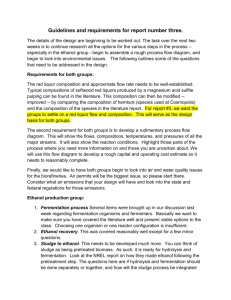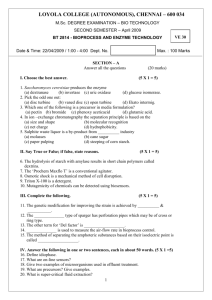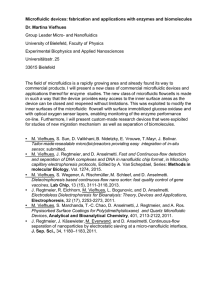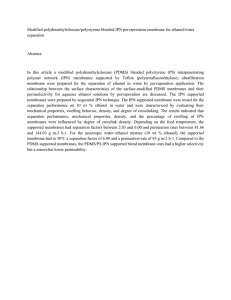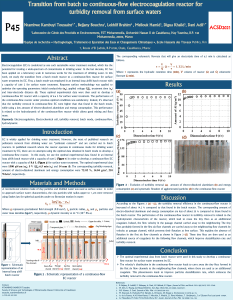Design of a continuous-flow, immobilized-cell fermentor system and separation process... production and separation of bioethanol
advertisement
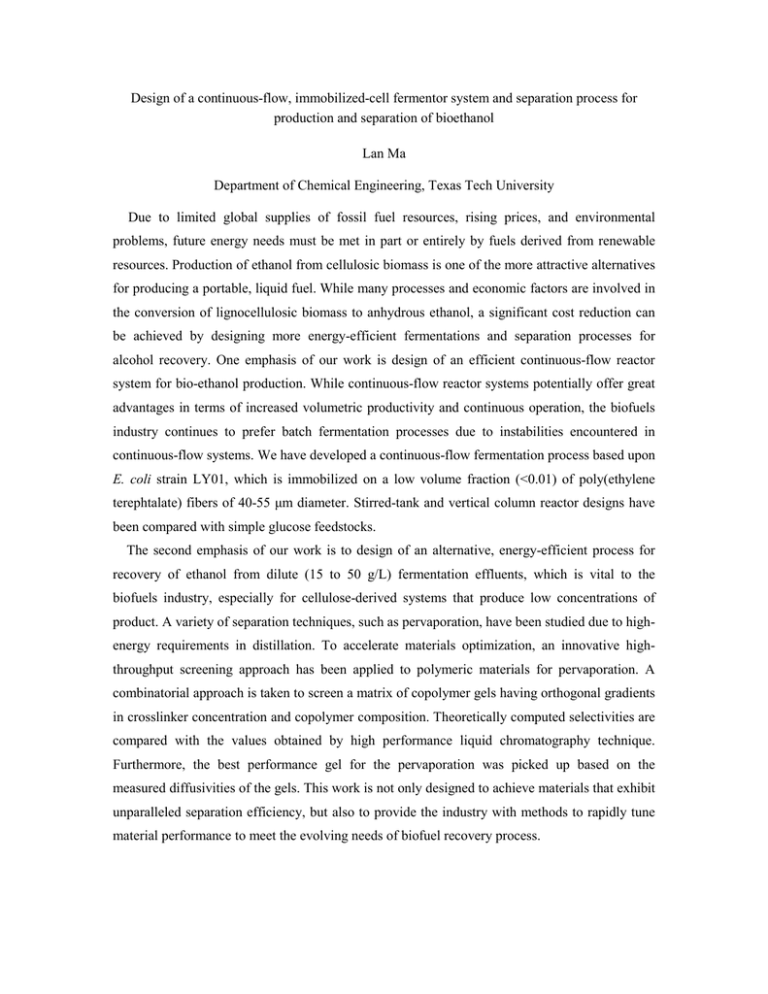
Design of a continuous-flow, immobilized-cell fermentor system and separation process for production and separation of bioethanol Lan Ma Department of Chemical Engineering, Texas Tech University Due to limited global supplies of fossil fuel resources, rising prices, and environmental problems, future energy needs must be met in part or entirely by fuels derived from renewable resources. Production of ethanol from cellulosic biomass is one of the more attractive alternatives for producing a portable, liquid fuel. While many processes and economic factors are involved in the conversion of lignocellulosic biomass to anhydrous ethanol, a significant cost reduction can be achieved by designing more energy-efficient fermentations and separation processes for alcohol recovery. One emphasis of our work is design of an efficient continuous-flow reactor system for bio-ethanol production. While continuous-flow reactor systems potentially offer great advantages in terms of increased volumetric productivity and continuous operation, the biofuels industry continues to prefer batch fermentation processes due to instabilities encountered in continuous-flow systems. We have developed a continuous-flow fermentation process based upon E. coli strain LY01, which is immobilized on a low volume fraction (<0.01) of poly(ethylene terephtalate) fibers of 40-55 μm diameter. Stirred-tank and vertical column reactor designs have been compared with simple glucose feedstocks. The second emphasis of our work is to design of an alternative, energy-efficient process for recovery of ethanol from dilute (15 to 50 g/L) fermentation effluents, which is vital to the biofuels industry, especially for cellulose-derived systems that produce low concentrations of product. A variety of separation techniques, such as pervaporation, have been studied due to highenergy requirements in distillation. To accelerate materials optimization, an innovative highthroughput screening approach has been applied to polymeric materials for pervaporation. A combinatorial approach is taken to screen a matrix of copolymer gels having orthogonal gradients in crosslinker concentration and copolymer composition. Theoretically computed selectivities are compared with the values obtained by high performance liquid chromatography technique. Furthermore, the best performance gel for the pervaporation was picked up based on the measured diffusivities of the gels. This work is not only designed to achieve materials that exhibit unparalleled separation efficiency, but also to provide the industry with methods to rapidly tune material performance to meet the evolving needs of biofuel recovery process.
